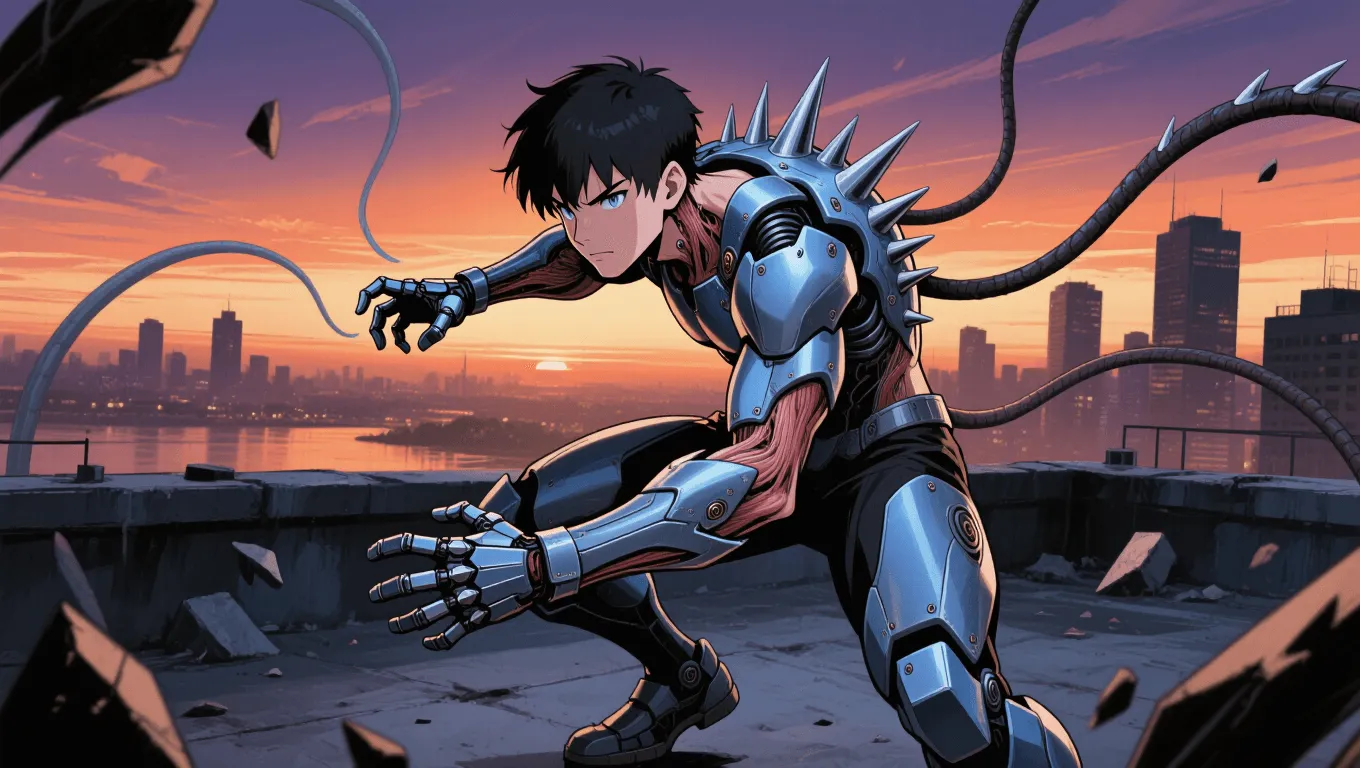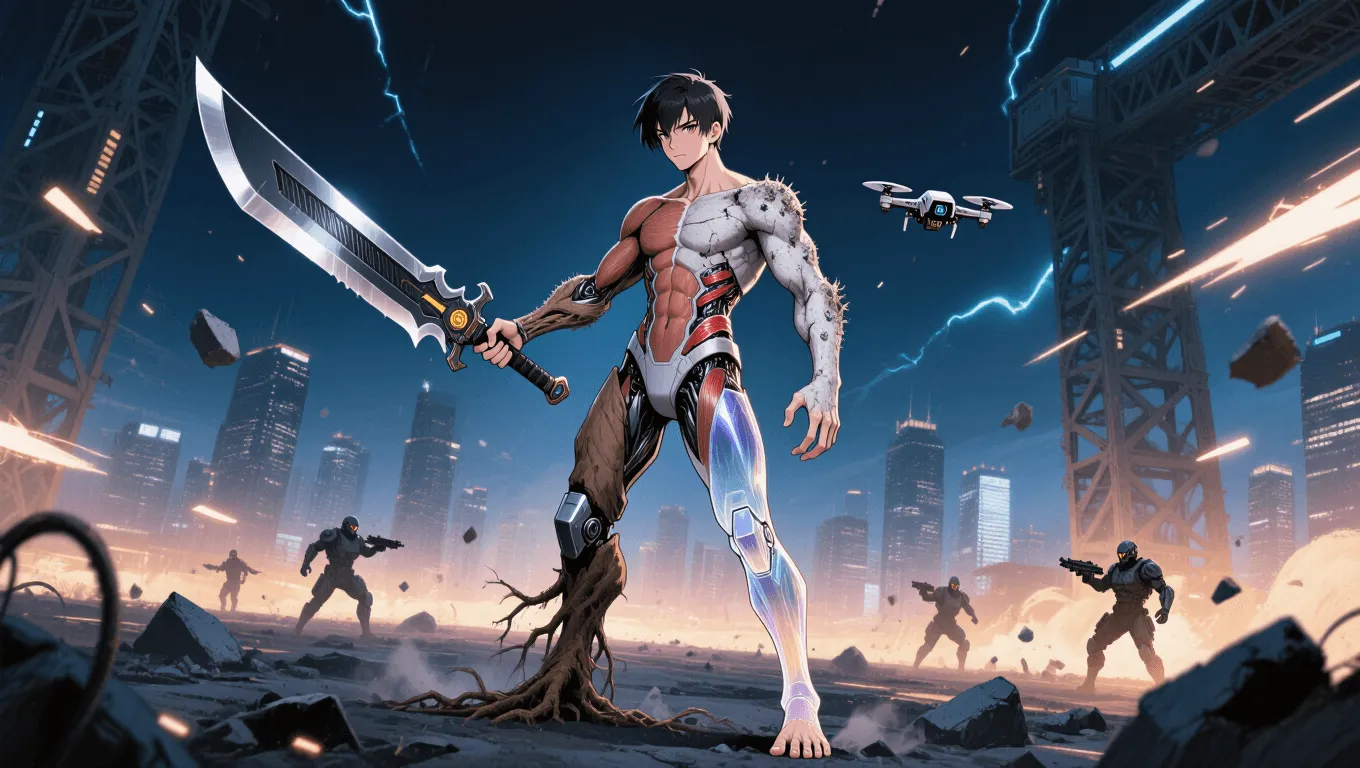Morphic Mimicry

Morphic Mimicry Video Demo 🎬
Table of Contents
Morphic Mimicry is the superpower of reshaping the body to copy forms, features, and functional anatomy at will. As a pinnacle form of shapeshifting and polymorph capability, Morphic Mimicry lets a character alter size profiles, grow armor-like plates, sprout wings or fins, and reproduce voices and facial structures for flawless disguise. It bridges transformation, biomimicry, elastic physiology, and adaptive regeneration into one versatile package. For readers exploring related abilities, browse the complete list on the superpower wiki or try the random superpower generator for inspiration.
What Is Morphic Mimicry
Morphic Mimicry is the capacity to reconfigure living tissue—skin, muscle, bone analogs, and sometimes organ systems—into new shapes and surface properties. Depending on story rules, the user can:
-
Replicate a person’s appearance, voice, and gait for infiltration.
-
Adopt animal traits such as talons, gills, echolocation structures, or prehensile tails.
-
Emulate material qualities like rubbery elasticity, stone-like hardness, chitin armor, or hydrophobic skin.
-
Generate custom tools and functional anatomy including spines, bludgeoning growths, gliding membranes, suction pads, or even toxin sacs.
Unlike illusions, Morphic Mimicry changes the body physically, not just perceptually. The transformation can be subtle—tightening facial features by millimeters—or theatrical, such as flattening to a sheet, broadening into a shield, or stretching limbs into cable-like tendrils. Many settings impose mass-conservation constraints, though others allow density modulation or pocket-mass storage to expand possibilities.
Core Abilities of Morphic Mimicry
Precision Disguise and Voice Replication
Advanced morphs copy microtextures (pores, scars, hairlines) and vocal timbre by reshaping laryngeal structures. With practice, the mimic reproduces fingerprints and retinal patterns, enabling deep-cover espionage.
Structural Remodeling
Users form protective plates, flexible lattices, retractable spikes, or segmented “exo-musculature.” This supports quick pivots between mobility and defense, creating a living toolkit for urban traversal and close-quarters combat.
Material Biomimicry
The body imitates the feel and function of materials: rubber-like impact absorption, shell-like resilience, bark-like texture for camouflage, or slick skin to shed water and grime. Some settings extend this to limited metallic sheen or crystalline hardness.
Functional Organ Emulation
With fine control, a mimic can integrate working features—gills for underwater breathing, nictitating membranes for dust storms, heat-sensing pits, or shock-absorbing “air sacs.” Internal redundancy improves survivability after heavy impacts.
Elasticity and Compression
Tissue reweaves into elastic bands or compressible gels, letting the user squeeze through vents, slip restraints, or spring-load strikes. In many portrayals, the brain remains shielded by dynamically shifting armor or fluid buffering.
Accelerated Healing and Regrowth
Because the body is in a remodeling-ready state, wound closure and limb regrowth are faster than baseline. This does not guarantee invulnerability but shortens recovery and enables mid-fight repairs.
Situational Density Modulation (setting-dependent)
Some interpretations allow the user to redistribute or “pack” mass for heavier strikes or lighten for gliding leaps. Where mass must be conserved, dramatic size changes require compensatory thinning elsewhere.
Application / Tactical Advantages in Combat
-
Infiltration Mastery: Perfect disguise, altered gait, and voice mimicry bypass many human security measures. Fingerprint and face replication defeat casual biometrics; layered shifts confound eyewitnesses.
-
On-Demand Weaponry: Grow bone-analog blades, knuckle spikes, or barbed tendrils. Whip-extensions control distance; hammer-like growths deliver shock trauma without external gear.
-
Adaptive Defense: Switch to plated or braided muscle forms to disperse impacts; re-route organs to safer cavities during firefights; thicken dermal layers to resist abrasion or cutting.
-
Mobility Everywhere: Climb with gecko-like pads, vault using strengthened tendons, glide on quick-deployed membranes, or shimmy through ducts by fluidizing body contours.
-
Environmental Readiness: Generate gills and webbing for aquatic arenas, insulating fat and fur for arctic zones, or heat-dissipating micro-ridges for deserts.
-
Psychological Warfare: Mid-battle transformations rattle opponents—becoming a known ally to sow confusion or a monstrous silhouette to break morale.
-
Utility and Escape: Grow tools like lock-pick claws, adhesive tethers, or bio-fiber “rope.” Flatten to hide, delaminate plates to shed grapples, or detach barbs to discourage pursuit.
Level: Level 1 🏙️, Level 2 🌇, Level 3 🌃
Level 1 🏙️ — Street-Level Shifter

-
Scope: Reliable cosmetic changes (face, body shape), simple appendages (short claws, modest limb extension), basic voice mimicry.
-
Control & Duration: Works in bursts; multiple rapid shifts cause fatigue. Fine details like fingerprints are inconsistent.
-
Combat Role: Scout and infiltrator with surprise angles. Leverages quick ambushes, camouflage, and getaway morphs more than tanking or sustained brawls.
Level 2 🌇 — Specialist Morph

-
Scope: Structural remodeling plus partial material biomimicry. Armor plates, elastic tendons, suction pads, and simple organ tweaks (e.g., low-light vision) come online.
-
Control & Duration: Sustained changes for minutes to hours, with smoother transitions between forms.
-
Combat Role: Adaptive skirmisher. Alternates between speed and durability builds, creates improvised bio-weapons, and thrives in complex environments (rooftops, tunnels, ship hulls).
Level 3 🌃 — Apex Polymorph

-
Scope: Whole-body reconfiguration at anatomical fidelity, including redundant organs and broad texture/material emulation. May include density tricks within narrative rules.
-
Control & Duration: Near-effortless, rapid, and precise. Microstructures (microspines, hydrophobic filaments, vibration-damping meshes) can be created on demand.
-
Combat Role: Battlefield chameleon and shock unit. Overwhelms with rapid counters, regenerates during engagements, and bypasses security through perfect mimicry.
Limitations of Using the Morphic Mimicry
-
High Energy Demand: Rewriting tissue costs calories. Prolonged or complex forms risk exhaustion, tremors, or slowed regeneration. Starvation cripples performance.
-
Mass Constraints: If mass is conserved, giant forms require thinning or hollowing elsewhere. If extra mass is allowed, cooldowns or storage penalties usually balance the advantage.
-
Biological Know-How: Functional organs require anatomical understanding. Improvised organs may underperform or malfunction under stress.
-
Structural Tradeoffs: Thick armor reduces flexibility and speed; extreme elasticity can tear under shearing forces; fluidized shapes risk blunt-force shock transmission.
-
Environmental Interference: Extreme cold stiffens tissue; solvents, acids, or desiccants degrade delicate morphs; electromagnetic fields and null zones may dampen control signals.
-
Detection Tech: Thermal signatures, weight sensors, trained canines, or active bio-scanners reveal discrepancies that visual mimicry alone cannot hide.
-
Shift Latency: Even elite users need fractions of a second to morph. Stun weapons, toxins, or grapples can interrupt transitions at the worst moment.
Weakness against what other superpowers
-
Power Negation/Null Fields: Cancels the remodeling reflex, trapping the user in a vulnerable mid-shift or base form.
-
Biokinesis/Hemokinesis: Direct manipulation of tissues and blood bypasses armor and forces painful, destabilizing counter-morphs.
-
Cryokinesis and Pyrokinesis: Cold makes tissue brittle; intense heat denatures complex morphs and burns away microstructures crucial to stealth and grip.
-
Telepathy/True-Sight: Reveals identity despite perfect disguise, erasing infiltration advantages.
-
Vibration/Seismic Control: Persistent resonance disrupts elastic and gel phases, causing loss of fine control and tearing microstructures.
-
Designer Pathogens/Toxins: Rapidly remodeling biology can be uniquely vulnerable to metabolic sabotages or targeted venoms.
-
Gravity Manipulation: Sudden gravity spikes collapse density-optimized builds and hamper mobility-focused morphs.
Synergistic Power Combos
-
Enhanced Metabolism/Bio-Energy Generation: Fuels long morph sessions, speeds regeneration, and stabilizes complex organ builds.
-
Photographic Reflexes (Combat Mimicry): Mirrors not only appearance but movement patterns, enabling instant adoption of enemy fighting styles.
-
Invisibility/Active Camouflage: Pairing optical bending with textured skin and color morphs yields near-perfect stealth across lighting conditions.
-
Bone Manipulation/Bio-Armory: Produces finely tuned blades, shields, darts, and articulated exoskeletal braces on command.
-
Hyper-Senses (Thermal, Echolocation, Electroreception): Guides the choice of morphology to counter unseen threats—e.g., heat pits against cloaked foes.
-
Hydrokinesis/Aerokinesis: External fluid control amplifies gills, fins, and wing membranes, making amphibious and aerial morphs battle-ready.
-
Technomorph or Smart-Polymer Integration (setting-dependent): Hybridizing with adaptive materials produces composite forms for extreme environments.
Known Users
-
Mystique — The iconic Marvel shapeshifter renowned for flawless disguise, voice replication, and rapid transformations. Learn more about Mystique.
-
Morph — A name used in several continuities for elastic shapeshifters, often focused on exaggerated, fast-paced transformations.
-
Copycat (Vanessa Carlysle) — Known for deep-cover impersonations that can extend to biochemical signatures in some portrayals.
-
Metamorpho — A DC hero who can transform into a range of elements and compounds, illustrating material biomimicry at scale.
-
Absorbing Man — Becomes the substance he touches (stone, metal, more exotic matter), showcasing property mimicry adjacent to full-body morphing.
For more powers like Morphic Mimicry, explore the superpower wiki or let fate pick your next idea with the random superpower generator.
